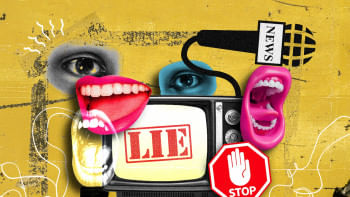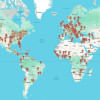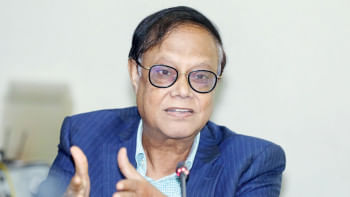Fight misinformation as a matter of urgency

Quite in line with Chief Adviser Muhammad Yunus's warning about rumours being "weaponised" to destabilise the country, we have seen how unrelenting, wide-ranging, and destabilising such rumours have been since the July uprising. This was fittingly reflected in the figures of 2024, which saw misinformation rise by 58 percent compared to 2023, and that momentum has continued into 2025. After detecting 268 instances of misinformation in February and 298 in March, Rumour Scanner, a fact-checking organisation, has now reported 296 cases in April. The persistent nature of those behind this campaign is deeply disturbing, as is the way they continue to find a fertile ground in post-uprising Bangladesh.
Like in previous months, April's misinformation was dominated by national and political themes, with 101 and 95 cases, respectively. Religious, international, and communal topics also featured prominently. Notably, 16 instances of communal misinformation were identified, some originating from Indian accounts, continuing a troubling trend of cross-border disinformation campaigns. Meanwhile, social media platforms remain the primary vectors for spreading such falsehoods. For example, Facebook, the favoured social media platform in Bangladesh, alone accounted for 276 cases, followed by YouTube (54), Instagram (48), X (formerly Twitter, 44), and TikTok (24). Alarmingly, even mainstream media outlets were implicated in 15 separate instances of disseminating misinformation.
Particularly concerning has been the targeting of key political and government figures, which aligns with what Prof Yunus has alluded to as the machinations of the "defeated side" intent on manipulating narratives and undermining trust in institutions. Yunus himself was the subject of 29 misinformation cases. Other advisers, including Asif Nazrul and Syeda Rizwana Hasan, were also targeted. Political parties and security forces were not spared either.
Rumour Scanner has also shed light on the mediums being used for this purpose: 138 cases were text-based, 105 involved videos, and 53 were image-centric. Among these, 179 were completely false, 66 misleading, and 48 distorted, but all generally constituting misinformation. Particularly concerning has been the targeting of key political and government figures, which aligns with what Prof Yunus has alluded to as the machinations of the "defeated side" intent on manipulating narratives and undermining trust in institutions. Yunus himself was the subject of 29 misinformation cases. Other advisers, including Asif Nazrul and Syeda Rizwana Hasan, were also targeted. Political parties and security forces were not spared either. Among the parties, BNP was the most affected, followed by Jamaat-e-Islami and National Citizen Party (NCP).
We don't need to remind anyone how hurtful this campaign has been, and it will only intensify as we approach the upcoming elections. This calls for heightened awareness and vigilance from the government and political institutions alike. The press, too, has a huge responsibility as it can stand guard against the circulation of doctored or misleading content by properly informing the citizens. But in the end, no initiative will be enough unless the citizens themselves become aware of the threat. This requires strengthening digital literacy across all demographics so that people can be empowered to critically assess the information they encounter online. There should be countrywide educational initiatives focusing on identifying credible sources and understanding the hallmarks of misinformation.


 For all latest news, follow The Daily Star's Google News channel.
For all latest news, follow The Daily Star's Google News channel. 









Comments